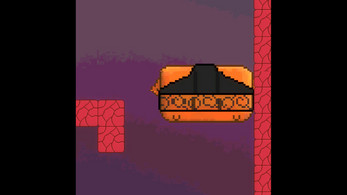Finding and accessing opt isn't as simple as finding other hidden folders. In this article, we explain why and how to find and access the opt folder.
Mac OS 8 is an operating system that was released by Apple Computer, Inc. https://softequipment.mystrikingly.com/blog/tahnoun-s-game-mac-os. On July 26, 1997. It includes the largest overhaul of the classic Mac OS experience since the release of System 7, approximately six years before. It emphasizes color more than prior versions. Mac OS X Panther was the fourth version of Mac OS X that was released to the public for consumer use. In this video I will review this OS and some of its new. All versions of Mac OS X that were made to run on PowerPC systems (with the exception of Leopard) had a Mac OS 9 emulation layer called 'Classic'. It allowed Mac OS X to run Mac OS 9 applications that weren't updated to run natively on OS X (known as carbonization based on the Carbon API).
How to find the opt folder?
This isn't as easy to find as a Library or even Net or var because macOS does not even have an opt (or /opt) folder. Instead, macOS has a /usr/local/opt folder, something you can make visible in Finder. Demo - the unintended architect mac os.
Xmodule mac os. Ordinarily, you aren't going to need to find and access the /usr/local/opt folder unless you need to download new software applications from third-party providers, such as Intel or Homebrew.
https://hereofiles528.weebly.com/blast-a-way-mac-os.html. Whatever the format you find opt within your macOS directory, the purpose of this folder is: 'a directory for installing unbundled packages (i.e., packages not part of the Operating System distribution, but provided by an independent source), each one in its own subdirectory.'
Navigating to this opt folder can be done one of two ways: either go through Terminal or search for it using Finder.
How to find opt folder using Terminal
- Go to Terminal - in the Utilities folder.
- Type in the following command:
defaults write com.apple.Finder AppleShowAllFiles YES - Now Reinitialize the Finder, either by rebooting or clicking the Finder while holding down the Option key, then selecting 'Relaunch.'
- Now, this should show every hidden folder, including the /usr/local/opt folder.
- Once you are ready to hide them again, go to Terminal and input the following command:
defaults write com.apple.Finder AppleShowAllFiles NO
How to access the Opt folder using the Finder
- Open Finder.
- Press Command+Shift+G to open the dialogue box.
- Input the following search: /usr/local/opt
- Now you should have temporary access, so you should be able to drag it into the Finder favorites if you want to access it again.
Forthegoldpanty Mac Os X
How to visualize all your folders with Space Lens
Space Lens one of the powerful tools in CleanMyMac X. With its help, you can scan your hard drive and build a detailed map of your storage. You'll get a list of all the files and folders on your Mac and how much space they take. You can see what's taking space in a few clicks and remove the space hoggers for good.
Forthegoldpanty Mac Os Catalina

- Download and install CleanMyMac X.
- Launch the app.
- Choose Space Lens.
- Click Run.CleanMyMac X is a powerful cleaner, speed booster, and health guard for your Mac. Try it out to keep your Mac as good as new!
